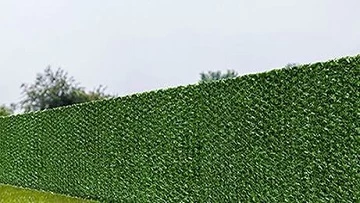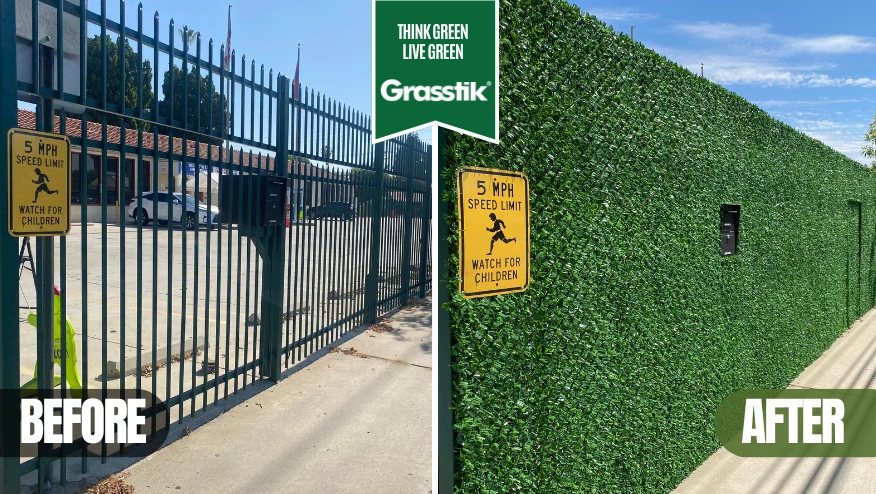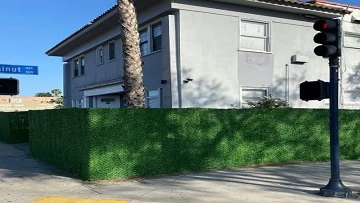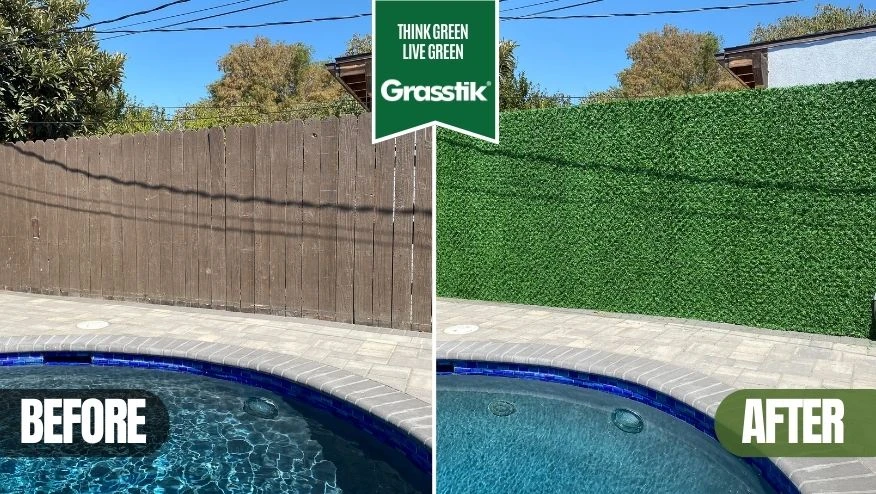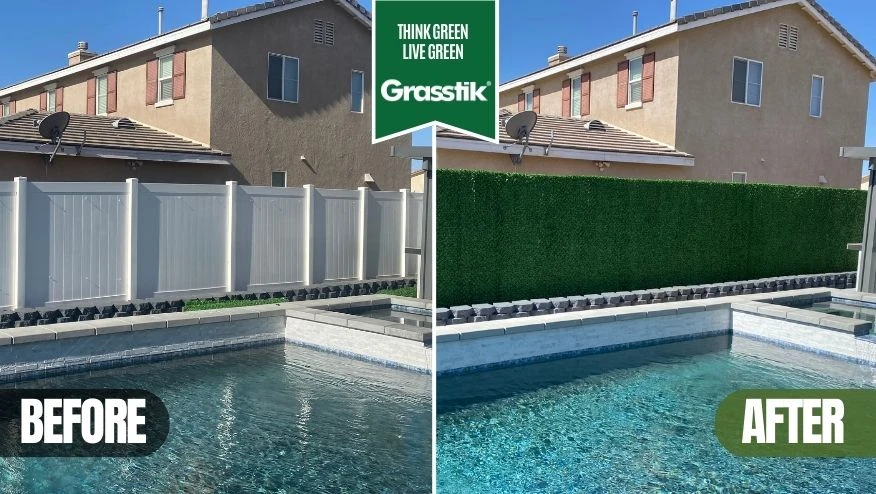
PVC fence panels are a popular choice in modern fencing, offering a blend of durability, low maintenance, and aesthetic versatility. These panels are made from polyvinyl chloride, a type of sturdy plastic known for its resilience. The primary function of these panels is to provide privacy and security, making them ideal as grass fence panels for residential and commercial properties. They serve as a barrier, ensuring a private, secure space within the confines of your property. In addition to their functional role, PVC fence panels also contribute significantly to the aesthetic appeal of a property. Available in various designs and colors, they can complement a range of architectural styles, enhancing the overall appearance of a landscape. The low maintenance aspect, coupled with their weather-resistant properties, makes PVC fence panels a practical and cost-effective solution for long-term fencing needs.
What are PVC Fence Panels?
Plastic fence panels, specifically those made from PVC (polyvinyl chloride), are a contemporary fencing option increasingly chosen over traditional materials like wood and metal. These panels are composed of a type of durable, high-grade plastic known for its strength, flexibility, and resistance to environmental elements. Unlike wood that may rot or metal that might rust, PVC remains unaffected by such conditions, making it ideal for long-lasting outdoor use.
The design versatility of PVC fence panels is notable. They come in a variety of styles, including picket, privacy, and decorative patterns, catering to different aesthetic preferences and functional needs. Additionally, these panels are available in multiple colors, allowing them to seamlessly integrate into various landscape designs. The ease of installation and minimal maintenance requirements – often needing just a simple wash with soap and water – further add to the appeal of plastic fence panels as a practical and visually pleasing fencing solution.
How to Install PVC Fence Panels?
Properly installing plastic fence panels is crucial for ensuring durability, stability, and aesthetic appeal. PVC coated fence panels require careful installation to maximize their benefits, such as long-lasting resilience against weathering and minimal maintenance needs. Incorrect installation can lead to structural weaknesses, reduced lifespan of the fence, and potential safety hazards. Therefore, following the correct installation steps is essential for both functionality and visual appeal. Here’s how to do it:
- Planning: Before beginning, plan the layout of the fence. Determine where the posts will go and how many panels you’ll need.
- Post Installation:
- Dig holes for the PVC posts at the marked spots.
- Place the posts in the holes and secure them with concrete for stability.
- Ensure the posts are level and evenly spaced.
- Panel Attachment:
- Once the concrete is dry and the posts are firmly in place, attach the PVC panels.
- Ensure each panel is level before securing it to the posts.
- Use appropriate fasteners for attachment, as recommended by the panel manufacturer.
- Finishing Touches:
- Install any gates or additional features.
- Check the entire fence for stability and make any necessary adjustments.
- Cleanup and Inspection:
- Clear the area of any installation debris.
- Conduct a final inspection to ensure everything is in place and secure.
Following these steps ensures that your PVC fence is installed correctly, providing a secure, private, and aesthetically pleasing boundary for your property.
How to Cut PVC Fence Panels?
Cutting vinyl privacy fence panels is often necessary when customizing the size to fit specific dimensions of a fencing project. This step is crucial for ensuring that the panels align correctly and look seamless upon installation. Accurate cutting is essential to maintain the aesthetic integrity of the fence and to prevent any wastage of materials. Improper cutting can lead to uneven edges or gaps in the fence, which can compromise both the appearance and functionality. Here’s how to properly cut these panels:
- Measure and Mark: Begin by measuring the area where the fence will be installed. Mark the cutting line on the vinyl panel using a marker or chalk.
- Choose the Right Tool: Use a fine-toothed saw, such as a handsaw or a circular saw, for a cleaner cut.
- Secure the Panel: Before cutting, ensure the panel is securely clamped or held in place to prevent movement.
- Cutting: Follow the marked line and cut through the panel steadily. Keep the saw at a consistent angle for a straight cut.
- Smoothing Edges: After cutting, smooth out any rough edges with sandpaper or a file.
- Safety Precautions: Always wear safety goggles and gloves to protect against flying debris and sharp edges.
Can You Bend PVC Fence Panels?
Vinyl PVC fence panels are designed to be durable and rigid, which means they are not typically meant to be bent. Attempting to bend these panels can result in cracking or breaking the material, as PVC is not inherently flexible. This damage not only affects the structural integrity of the fence but also its aesthetic appearance. Bending PVC panels can also void any manufacturer warranties.
If a fencing project requires curved lines or specific shapes, it’s important to consider other options. There are specialized flexible PVC products available that can accommodate curves and unique designs. These products are specifically engineered to be more pliable than standard PVC fence panels, allowing them to bend without damage. However, shaping these specialized panels often requires professional tools and techniques. Therefore, for projects requiring non-linear or curved fencing, consulting with a professional or using specifically designed flexible PVC products is advisable.
What are PVC Fence Panels Used For?
PVC fence panels are highly versatile and find multiple uses in both residential and commercial settings. As grass fences, they are ideal for homeowners who want to create a private outdoor space, effectively blocking the view from outside. Vinyl panels for fence constructions are also popular in commercial areas for securing and defining property boundaries. In terms of aesthetics, PVC decorative fence panels offer a range of styles and colors, making them a favorable choice for landscaping and enhancing curb appeal. They can be used in gardens to create distinct areas or as a decorative perimeter around pools. Additionally, PVC fences are often employed in agricultural settings for enclosing livestock, due to their durability and ease of maintenance.
How to Remove PVC Fence Panels?
To remove vinyl fence panel without causing damage, especially if planning to reuse them, follow these steps:
- Identify Fasteners: Locate the screws or clips holding the panel to the posts.
- Unscrew or Unclip: Carefully unscrew or unclip the fasteners. It’s advisable to use the appropriate tools to avoid stripping the screws.
- Gentle Removal: Gently lift and pull the panel away from the post. If it’s stuck, check for any overlooked fasteners or gently tap to loosen it.
- Safe Storage: Once removed, store the panels in a safe place to prevent warping or damage.
This method ensures that the panels can be removed safely and kept in good condition for future use.
How Much Privacy Does a PVC Fence Panel Provide?
The privacy offered by PVC fence panels varies with their height and design. A 4 ft vinyl fence generally provides basic boundary definition with limited privacy. It's suitable for front yards or decorative purposes. 6ft vinyl fence panels offer more privacy, ideal for backyard enclosures where moderate seclusion is desired. The 8 ft vinyl fence panels provide the highest level of privacy, making them perfect for areas where complete visual isolation is needed, such as around swimming pools or back gardens. Solid panels without any gaps offer maximum privacy, while designs like lattice work provide semi-privacy with an aesthetic appeal.
How to Replace PVC Fence Panel?
Replacing a PVC fence panel is a relatively simple task that can significantly refresh the appearance of your fence. Here's how to replace vinyl fence panels:
- Remove the Damaged Panel: Carefully unscrew or unclip the damaged panel from the supporting posts.
- Prepare the Replacement Panel: Measure the space and cut the new panel to size if necessary.
- Install the New Panel: Align the new panel and secure it to the posts with screws or clips.
- Ensure Consistency: Check that the new panel aligns seamlessly with adjacent panels for a uniform look.
Beyond PVC, other materials like wood, composite, or metal can also be used for privacy fencing. These alternatives provide different styles and maintenance profiles, allowing customization based on aesthetic preferences and functional needs. You can even use a plain chain link fence and cover it with privacy material such as slats, artificial grass, screen, mash, etc. It is advisable to seek cost-effective options; however, when it comes to matters of privacy, it is essential to prioritize both aesthetics and durability.

